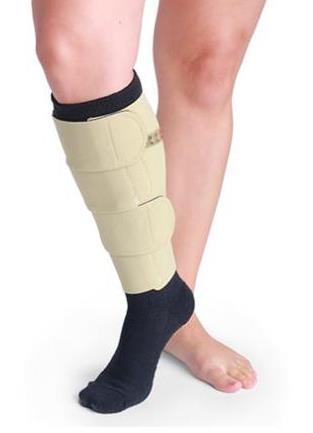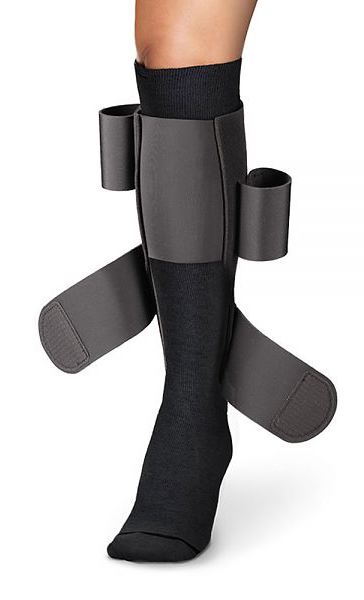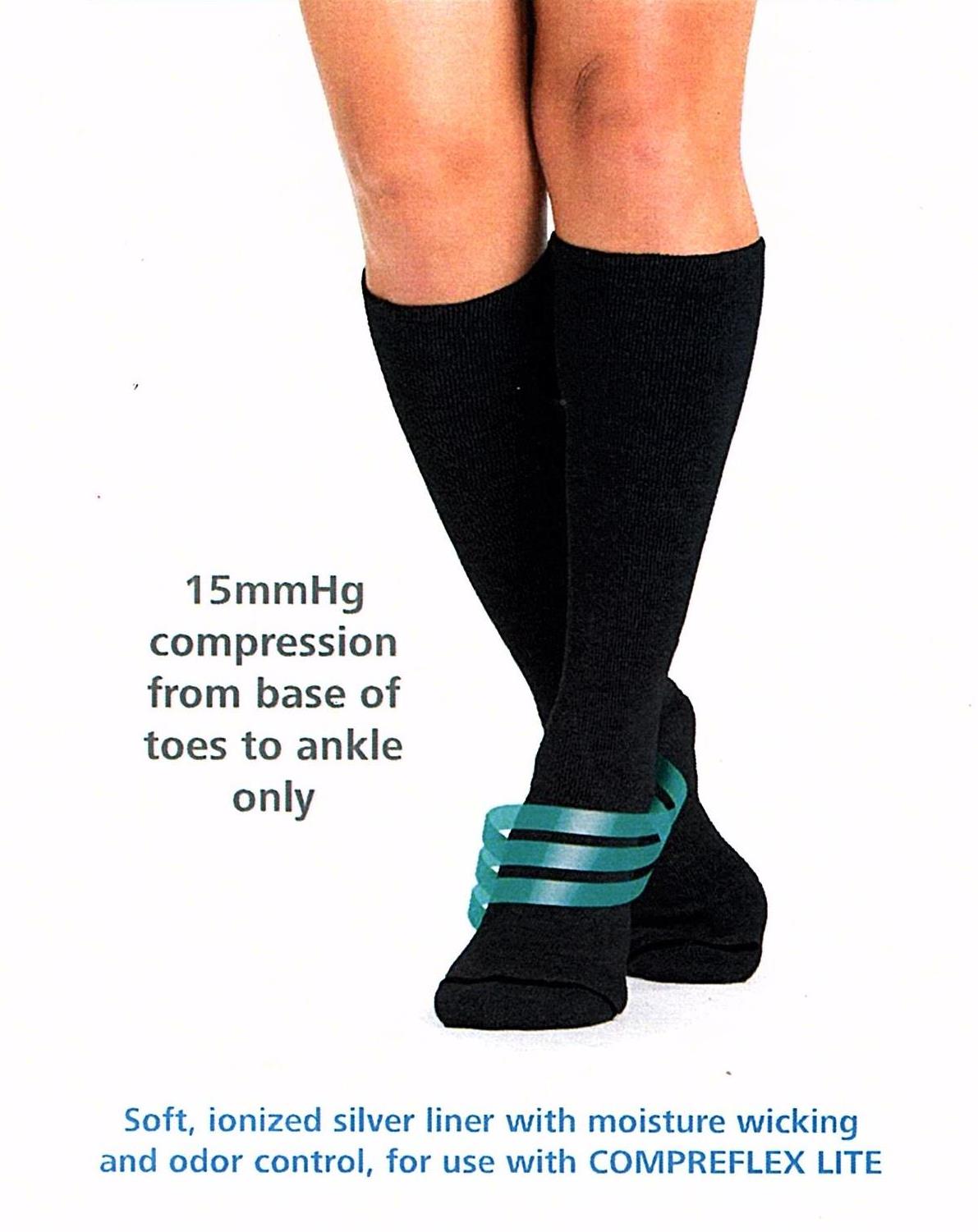Compreflex Transition - Full Proof & Accurate Compression
by Robyn A (Redd) Smith, M.Ed., COTA/L, CLWT, CLT
Owner: Life Rehabilitation, LC – Salt Lake City, Utah
Compreflex Transition®
Providing full-proof, accurate compression
As lymphedema therapists, we know our patients don’t always follow the instructions we give them. Whether you call it compliance or adherence, we know that following the rules of Complete Decongestive Therapy (CDT) is paramount to successful outcomes. In my practice, I have seen wraps erroneously placed upside down, inside out, and backwards. One time, I saw all three errors at once. Improper donning can, not only slow down CDT progress, but, more importantly, be dangerous for the patient. I have spent years testing the top Velcro® wraps available in search of wraps that are “fool proof.” I finally found one a little over a year ago with the Compreflex Transition Compression Wraps from Sigvaris.

Compreflex Transition® - Key Features
Today, I want to talk about three key features of Compreflex Transition that I believe make the product “fool proof” and assure that patients can assist in their Phase I care and, ultimately, safely take over their future-care independently in Phase II. (A fourth feature requiring its own in-depth discussion will be the subject of my next blog—Getting Compression Levels Right: Using ACCUTAB™ with the Compreflex line of compression wraps.)
Shaped Calf
When using other products in the past, I ran into problems with fitting the wrap to the shape of the lower leg. All wraps available on the market were flat straps that tried to emulate wrapping with short stretch bandages. Instructions for the wraps stated that I should keep the straps parallel to the floor when wrapping. However, physics tells us that you cannot wrap a flat, non-elastic material firmly around a conical shape without having to angle the material. As a therapist, I had the choice of open gaping areas distally if wrapping parallel to the floor or angling the straps and therefore negatively affecting the gradient pressure needed to decongest the patient’s lower extremities. Neither were choices I was happy with. With the Compreflex Transition compression wraps, the shaping is built into the calf, so it takes care of that problem. I can keep the straps parallel, building proper compression levels working within Laplace’s Law, which is what we know makes gradient compression work.
Initial Placement Panel

Other wraps I tried state that the top strap should be placed “loosely” initially and then, starting from the bottom and using both hands, each strap should be adjusted up to the top, re-placing the top strap. I don’t know about you, but it generally took two or three times of wrapping and then being too high, unwrapping and starting again to only be too low. With the extremely stretchy front panel as part of the Compreflex Transition lymphedema wrap, I can place the wrap in exactly the right place to begin with and be able to immediately place the Velcro® straps in place. With the panel, I don’t need three hands (or even two) to place a wrap. And for my patients that do not have the range of motion necessary to use both hands, the Compreflex Transition leg wrap is the only option as it can be donned with just one hand.
Choice of Compression in Foot
First, I’ve never understood why all wraps need to be worn with a liner, but didn’t come with one at all or only came with one liner. (What does the patient do for compression when washing the liner?) Happily, each Compreflex Transition compression wrap comes with two liner stockings (one to wear, one to wash). Second, some patients don’t need high levels of compression in the foot, but still need some compression. How do I get gradient compression that starts at the foot/ankle without adding a separate footpiece? Compreflex Transition compression leg wrap offers a choice of three different liners (extras can also be purchased separately). The stocking liner that is included with the Compreflex Transition compression wrap for the leg is what they call the Transition Silver Liner.
It has compression from MTP joints to just superior to the malleoli at a 15mmHg level that is perfect for my patients who can still wear shoes and don’t need a footpiece. For patients that need a higher level of foot compression, I opt for the non-compressive Basic Liner with one of Sigvaris’ leg and foot garments such as the Compreflex Standard calf compression wrap. A new liner option that Sigvaris is offering is a fully compressive liner called the Complete Silver Liner. I find that for my patients who have vascular issues (minimal to moderate PAD), removing the outer wrap while continuing to wear the Complete Silver Liner in bed at night is the answer to safely keeping the edematous reflux pain away while not putting the feet at risk.
Hopefully, understanding details about how the Compreflex Transition successfully works in my clinical practice will benefit you as a therapist and, in turn, will benefit your patients. Stay tuned for my next blog discussing what I think is the feature of the Sigvaris Compreflex line of lymphedema leg wraps that truly sets them apart – their evidence-based AccuTab™ controlled-compression system. Until then..... Redd



